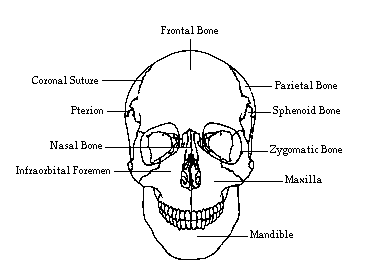1. Day 2 – Fertilization. This is significant because without this, there would be no baby.
Fertilization:

www.nrlc.org/abortion/facts/fetaldevelopment.html
2. 4th week - heart is beating. For many centuries, the beating heart was used to establish whether or not someone was alive. To this day, we still assess that for one of the signs of life.
3. 1 ½ months – brain waves can be measured with EEG. Heart chambers and valves are formed. I thought this was significant because it meant heart and mind are beginning to function. Sort of analogous to the makeup of all that is human, thinking and feeling beings. I did not know I was investigating an area of debate between various groups on the topic of abortion and the fundamental question of when does life begin. Seems to me this little person is alive. We were all there once.
3 month old fetus:

http://www.dushkin.com/connectext/psy/ch03/fetus.mhtml
4. Week 9 - Basic brain structure of the fetus is complete. Again, the ability to think and reason is one of the things that sets us apart from other species. I realize this says “basic brain structure”, but it also means the potential is there.
5. 3 months - capable of hearing. I think that some sounds can be heard through the womb and this is important to recognise. Maybe some sounds will agitate the baby.

http://www.laserprofessor.com/pimages/Mo3baby.jpg
Now we can share music. Time to put on the headphones.

http://www.sciam.com/media/inline/FBB1ABAE-E7F2-99DF-3C2FEE4066F9308B_1.gif
Also sex organs can be detected. This is significant because we can pick a name and paint the walls of the nursery, if the sonographer is competent and the baby is cooperative.
6. 4 months: babies sucking thumbs. This is important because the fetus can self-comfort. I wonder if this is an accident that the thumb touched the mouth and the instinct to suckle drew the thumb in or it becomes a conscious action.
7. 5 months: baby can kick hard enough for mom to feel. The pic below is actually a five month fetus sucking his thumb. An amazing photo. I think that feeling the baby moving inside your own womb is an amazing experience and significant because you become aware of this lively, purposeful baby. Each one of my kids had different types of movements which was consistent with their personalities.
5 month old fetus:

http://survivors.la/images/19-weeks.jpg
8. 7 months – taste buds have developed. I personally like that my taste buds work and think this is a very important and vital function.
Yummmm . . .

http://livingwithcfs.files.wordpress.com/2007/10/chocolate.jpg
9. 8 months – most organs are fully developed except for the lungs. This means that the baby is almost ready. The last month will be the longest.
Eight month fetus:

http://www.babycenter.com/fetal-development-images-36-weeks
10. 9 months – now fully developed and can survive outside of mom’s body. The baby will drop down and if normally positioned, the head will rest on the cervix, ready for delivery. The most anticipated event in the world! All systems are go and hopefully all will go well.
The fruit of our labor:

http://www.linnealenkus.com/image/newbornLLS01.jpg














































